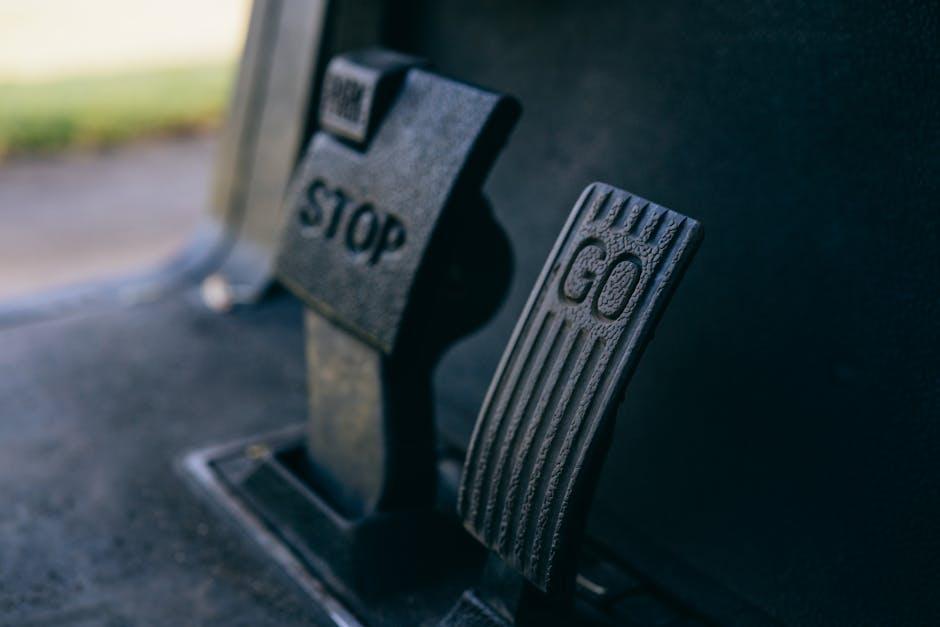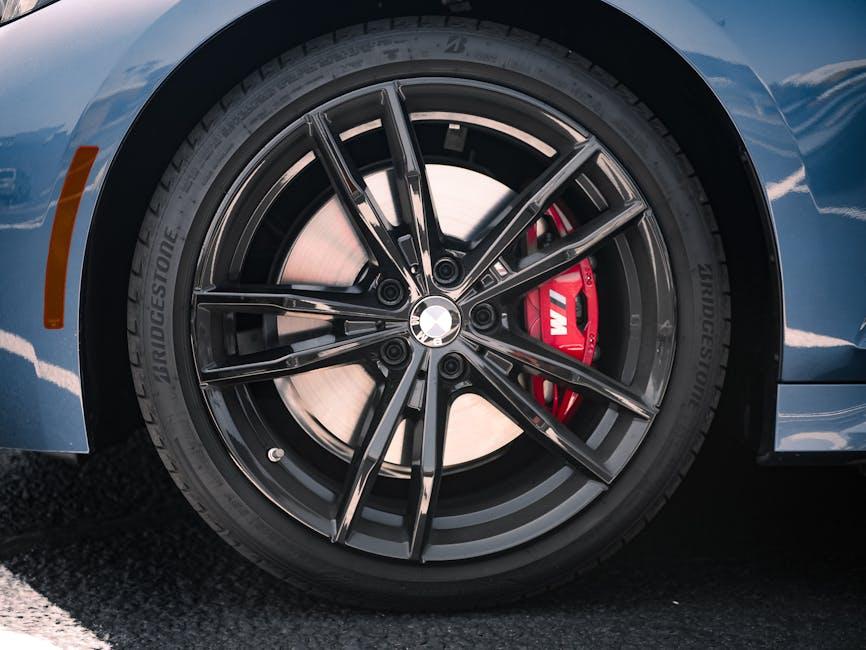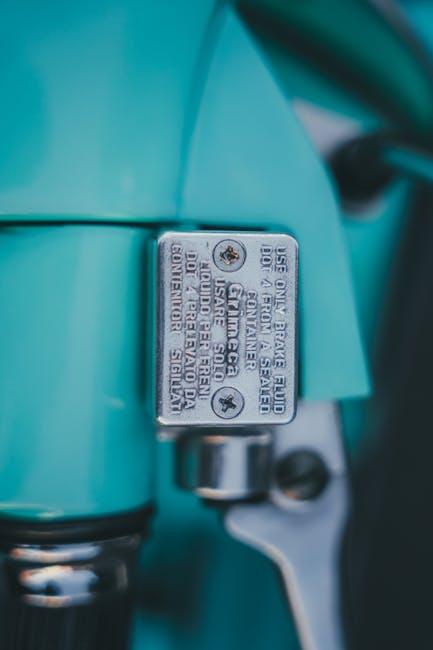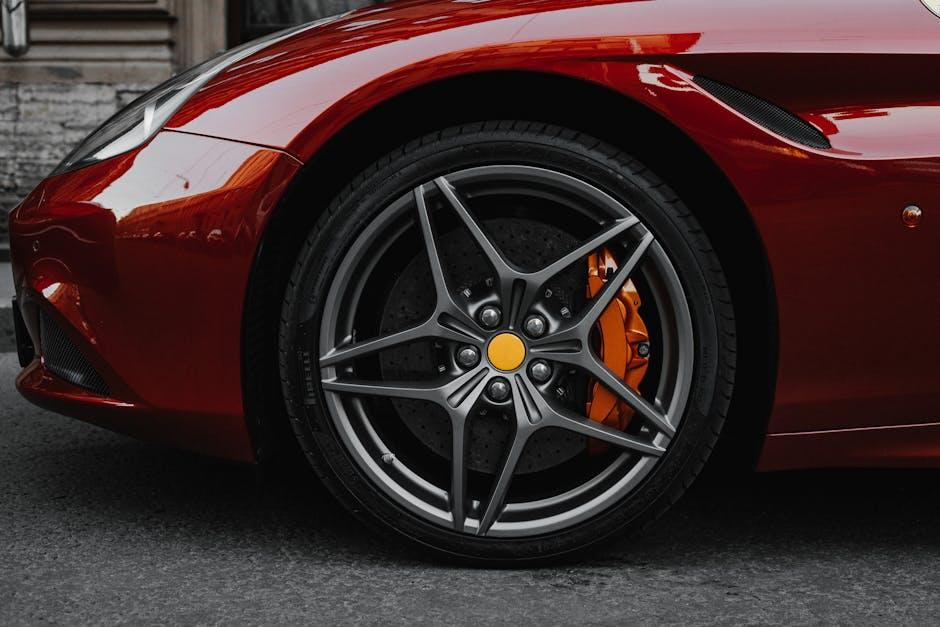Every journey begins with a simple press of the pedal, but it’s the brakes that often decide how safely—and how far—you truly travel. Car brakes, the unsung heroes of the road, work tirelessly behind the scenes to keep you in control. Yet, like all mechanical parts, they wear down over time. So, how long do car brakes actually last? In this article, we’ll explore the factors that influence their lifespan, signs of wear to watch for, and tips to help extend their durability, ensuring that your stopping power remains reliable mile after mile.
Table of Contents
- Understanding the Lifespan of Car Brakes in Different Driving Conditions
- Key Factors That Influence Brake Pad Durability
- Signs Your Car Brakes Are Wearing Out and Need Attention
- How Brake Material Types Affect Longevity and Performance
- Practical Maintenance Tips to Extend the Life of Your Brakes
- When to Upgrade Your Brake System for Optimal Safety
- Q&A
- To Conclude

Understanding the Lifespan of Car Brakes in Different Driving Conditions
Brakes don’t wear out at a uniform pace; their lifespan fluctuates dramatically depending on the environments and driving habits they endure. Urban stop-and-go traffic, where constant braking is necessary, slashes brake life more quickly than steady highway driving. Conversely, rural or less congested conditions allow brakes to cool down between stops, prolonging their function. For instance, using the brakes gently on downhill slopes versus abrupt, aggressive stops greatly reduces premature wear. Additionally, factors like weather play a role—wet or icy conditions often require cautious braking, potentially extending brake health by minimizing harsh stops.
Understanding the variables can help drivers anticipate maintenance needs better. Here’s a quick look at how different factors influence brake life:
- City Driving: Frequent braking reduces pad lifespan significantly.
- Highway Driving: Less frequent braking generally preserves brake components.
- Hilly Terrain: Continuous use of brakes while descending tends to increase wear.
- Climate Effect: Extreme heat can cause brake fade, while cold climates may lead to rust formation.
| Driving Condition | Average Brake Pad Lifespan |
|---|---|
| Heavy City Traffic | 20,000 – 35,000 miles |
| Suburban/Light Traffic | 35,000 – 50,000 miles |
| Highway Driving | 50,000 – 70,000 miles |

Key Factors That Influence Brake Pad Durability
Several elements play a crucial role in how long your brake pads will last before needing replacement. One of the primary factors is driving habits. Aggressive acceleration and hard braking put more stress on the brake pads, causing them to wear out faster. Conversely, smoother driving with gradual stops can significantly extend pad life. Road conditions are also impactful; frequent driving on hilly or mountainous terrain forces the brakes to work harder, accelerating wear. Urban stop-and-go traffic versus highway cruising further dictates how briskly brake pads deteriorate.
Brake pad material composition and maintenance routines also determine durability. Common materials like organic, semi-metallic, and ceramic pads each have distinct wear characteristics—organic pads tend to wear faster but are quieter, while ceramic pads last longer but cost more. Regular maintenance such as cleaning the brake components and checking for uneven wear helps prevent premature failure. Below is a brief comparison that outlines the expected longevity of different brake pad types under typical conditions:
| Pad Type | Average Lifespan (miles) | Key Advantage |
|---|---|---|
| Organic | 30,000 – 40,000 | Quiet operation |
| Semi-Metallic | 35,000 – 50,000 | Good heat dissipation |
| Ceramic | 50,000 – 70,000 | Long-lasting & clean braking |
- Driving style directly impacts wear rate, especially in urban vs. highway driving.
- Regular inspections catch issues like uneven pad wear or rotor damage early.
- Brake pad composition determines price, noise, and longevity trade-offs.
- Road and weather conditions influence how frequently brake pads require replacement.

Signs Your Car Brakes Are Wearing Out and Need Attention
Recognizing the early indicators of brake wear can save you from costly repairs and ensure your safety on the road. One of the most obvious signals is a persistent squealing or grinding noise when you apply the brakes. This sound often means the brake pads are thinning and the metal components are starting to rub against each other. Additionally, if the brake pedal feels softer or sinks closer to the floor than usual, it could indicate air in the brake lines or fluid leaks, requiring immediate attention. Vibrations or pulsing sensations during braking are another red flag, potentially pointing to warped rotors that need resurfacing or replacement.
Visual cues also play a crucial role in diagnosing brake health. Look for uneven wear on your tires or brake pads, which can suggest misalignment or caliper issues. Streaks or discoloration around the wheels might mean brake fluid is leaking, compromising the system’s efficiency. Below is a handy checklist to quickly assess whether it’s time to schedule a brake inspection:
- Unusual noises: Squealing, grinding, or clicking sounds
- Brake pedal issues: Soft, spongy feeling or excessive travel
- Vibrations: Pulsing or shaking while braking
- Visual signs: Thin brake pads, leaking fluid
- Warning lights: Illuminated brake system indicator on the dashboard

How Brake Material Types Affect Longevity and Performance
Understanding the type of brake material your vehicle uses is crucial because it directly impacts both the lifespan and effectiveness of your brakes. Organic brake pads, often made from a mix of fibers and fillers bonded with resin, are gentle on rotors and offer quieter stops, but they tend to wear out faster. Conversely, semi-metallic pads incorporate metal fibers for increased durability and better heat dissipation; however, they can be somewhat noisier and may cause more rotor wear. On the other end, ceramic pads provide an excellent balance—offering longevity, minimal dust, and consistent performance under various conditions, though usually at a higher price point.
Here’s a quick comparison highlighting the key features of common brake pad materials:
| Brake Material | Average Lifespan (miles) | Performance | Key Benefit |
|---|---|---|---|
| Organic | 30,000 – 50,000 | Quiet, softer stopping | Less rotor wear |
| Semi-Metallic | 40,000 – 60,000 | Strong braking, heats well | Durability |
| Ceramic | 50,000 – 70,000+ | Consistent, less dust | Longevity & cleanliness |
Choosing the right brake material depends on your driving style and vehicle needs. If you prioritize longevity and low maintenance, ceramic pads often make the most sense. However, if you navigate stop-and-go city traffic frequently, semi-metallic pads might offer the best balance of durability and quick heat handling. Recognizing these differences can save you money and enhance safety by ensuring your brakes remain reliable whenever you need them most.

Practical Maintenance Tips to Extend the Life of Your Brakes
Extend the life of your brakes by adopting some practical habits that go beyond routine inspections. For starters, practice smooth braking—avoid sudden stops whenever possible as aggressive braking accelerates brake pad wear. Also, be mindful of your speed, especially on downhill slopes, since riding the brake pedal continuously can lead to overheating and damage. Alongside these habits, keep an ear out for any unusual noises like squealing or grinding, which often signal the need for immediate attention.
Regular maintenance is the cornerstone of brake longevity. Make it a habit to:
- Check brake fluid levels every few months, topping up with the recommended type if necessary.
- Inspect your brake pads and rotors during tire rotations or at least every 10,000 miles.
- Ensure discs are cleaned from debris and dirt to prevent uneven wear.
- Balance your vehicle’s load to avoid uneven pressure on your brakes.
| Maintenance Action | Recommended Frequency |
|---|---|
| Brake Fluid Check | Every 6 Months |
| Brake Pad Inspection | Every 10,000 Miles |
| Brake System Cleaning | Annually |
| Professional Brake Service | Every 20,000-30,000 Miles |

When to Upgrade Your Brake System for Optimal Safety
Recognizing the right moment to enhance your brake system isn’t just a matter of preventing costly repairs—it’s a critical safety decision. Beyond the typical wear-and-tear signs like squeaking or diminished responsiveness, pay close attention to subtle hints such as increased stopping distances, vibration when braking, or a spongy brake pedal. These indicators often suggest that your brake pads, rotors, or fluid need immediate attention or upgrading to maintain peak performance on the road.
Upgrading can also be a wise choice when your driving conditions become more demanding or when you notice a significant change in braking efficiency. Vehicles used for heavy towing, frequent mountain driving, or stop-and-go city traffic usually benefit from higher quality or larger brake components. To help you track possible upgrade triggers, here’s a quick reference table:
| Situation | Recommended Upgrade | Key Benefit |
|---|---|---|
| Regular city driving, worn pads | Standard ceramic or semi-metallic pads | Quieter braking, longer pad life |
| Heavy towing or frequent hills | High-performance brake rotors and pads | Improved heat dissipation, increased stopping power |
| Off-road or rugged terrain | Durable, abrasion-resistant brake sets | Enhanced durability, reliable braking under stress |
Q&A
Q: How long do car brakes typically last?
A: On average, car brakes last between 30,000 and 70,000 miles. However, this range can vary widely depending on driving habits, brake quality, and vehicle type.
Q: What factors influence the lifespan of car brakes?
A: Several factors play a role, including driving style (aggressive braking wears pads faster), the type of brake pads used (organic, semi-metallic, ceramic), driving conditions (city vs. highway), and how well the braking system is maintained.
Q: Can I tell when my brakes are wearing out?
A: Yes. Common signs include squealing or grinding noises, a longer stopping distance, vibration in the brake pedal, or a warning light on your dashboard. Regular inspections can help catch wear before it becomes dangerous.
Q: How often should brake pads be inspected?
A: It’s a good idea to have your brake pads checked during routine maintenance, roughly every 10,000 to 15,000 miles. This helps ensure optimal performance and safety.
Q: Do all brake components wear out at the same rate?
A: No. Brake pads wear out faster than rotors, but if pads wear down too much, they can damage the rotors, leading to more costly repairs. Rotors can last anywhere from 30,000 to 70,000 miles but may need replacement sooner if damaged.
Q: Can driving habits extend brake life?
A: Absolutely! Smooth, gradual braking instead of sudden stops, avoiding unnecessary braking, and coasting when possible all help extend brake life, saving money while keeping you safe.
Q: What happens if I ignore worn brakes?
A: Ignoring worn brakes can lead to reduced stopping power, increased risk of accidents, and costly damage to your braking system. It’s crucial to address brake issues early for your safety and your wallet.
Q: Are ceramic brake pads better than others for longevity?
A: Ceramic pads often last longer and produce less dust, but they can be more expensive. The best choice depends on your driving style and vehicle requirements.
Q: How can I maximize the lifespan of my car brakes?
A: Regular maintenance, mindful driving habits, and choosing quality brake parts can significantly extend your brakes’ lifespan and ensure reliable stopping power wherever the road takes you.
To Conclude
In the end, the lifespan of your car brakes is a tale written by mileage, driving habits, and the roads you travel. While no one-size-fits-all answer exists, staying attentive to the subtle whispers of wear and tear can keep you steering safely for miles to come. Treat your brakes with care, listen to their signals, and they’ll reward you with reliable stopping power—turning every journey into a smooth and secure adventure.

